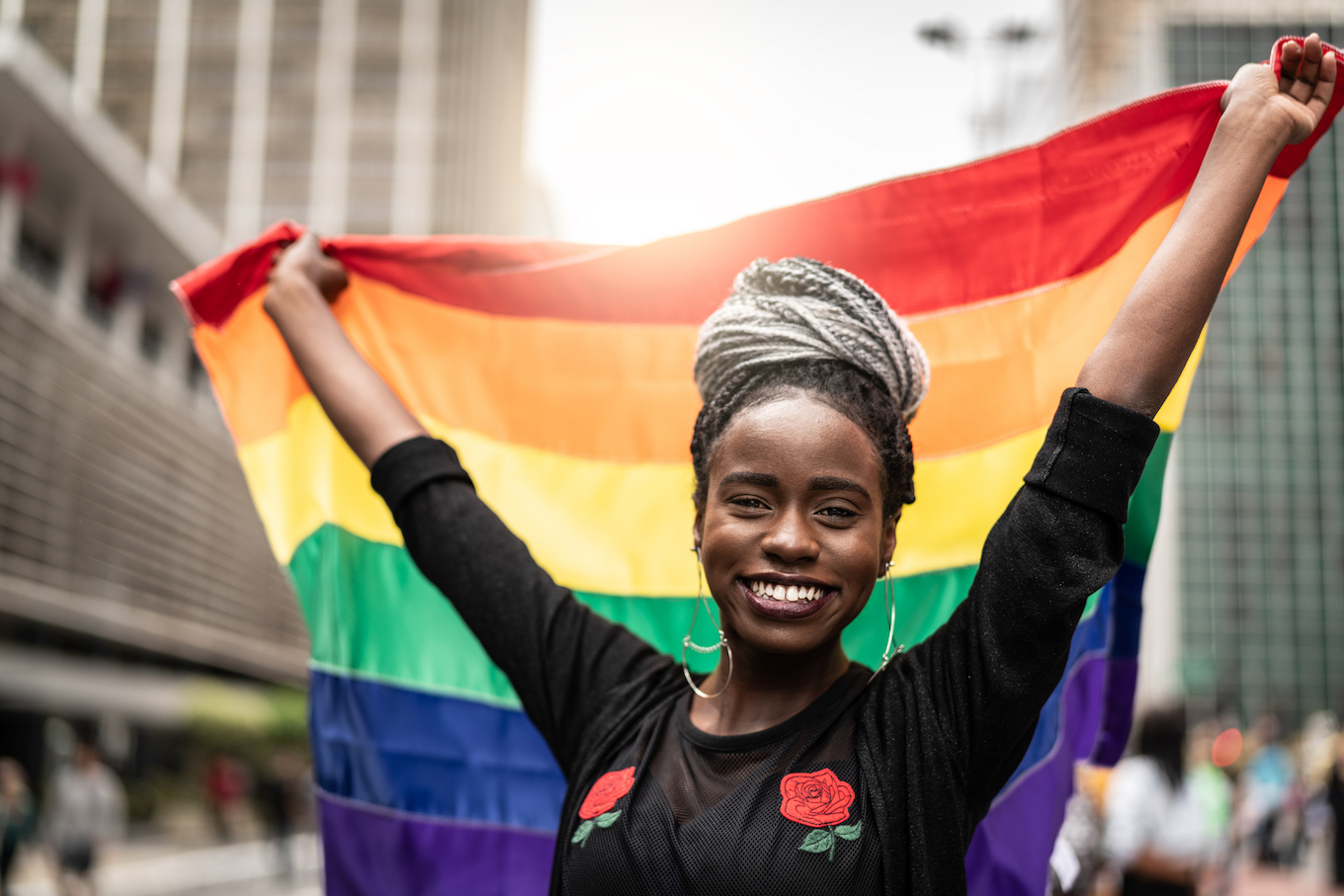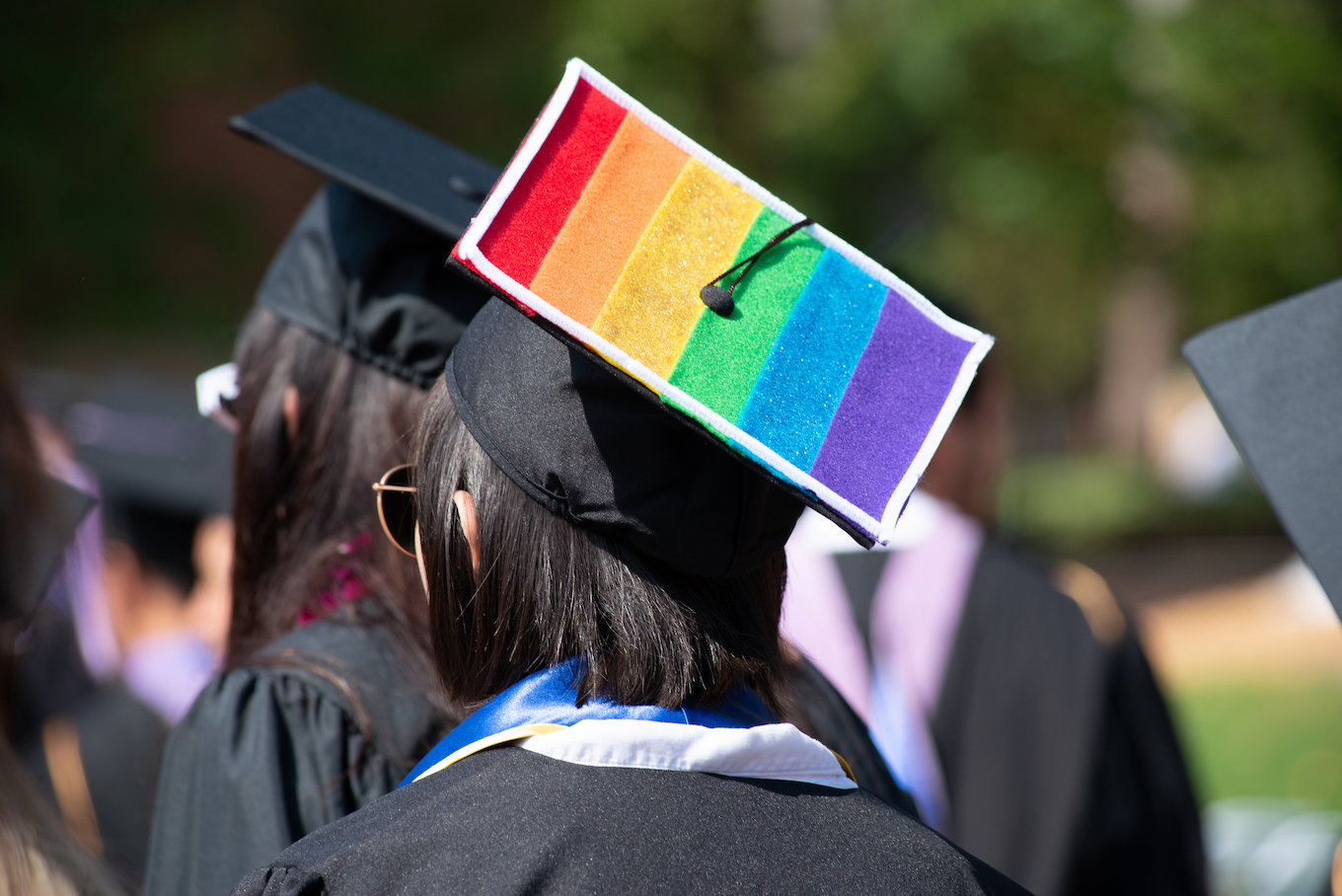
TRIGGER WARNING: This post contains information about suicide, which may be triggering to some.
September is National Suicide Prevention Month, and we’re taking a moment to focus on suicide issues specifically within the LGBTQ+ community. It can be scary and isolating to navigate the world as a young queer person. According to NPR, a recent survey found that “45% of LGBTQ youth seriously considered attempting suicide in the past year.”
That’s a tragic statistic, and parents raising young queer kids are right to be concerned. But there are resources to help prevent suicide in young LGBTQ+ people. From counseling and health care options to inclusion initiatives and safe spaces — building a community of caring and supportive people can make all the difference.
Note: If you or any of your loved ones are struggling with suicidal thoughts, you can always reach out to the 988 Suicide & Crisis Lifeline by calling 988. They are available 24/7 by phone or online chat.
More from CafeMom: 17 Ways Parents Can Support Their LGBTQ+ Kids
Warning Signs

Not every person will exhibit the same warning signs if they’re having suicidal thoughts, but there are some things we should be aware of to best help our children navigate their struggles. The Trevor Project, a suicide prevention organization that focuses on helping LGBTQ+ youth, has a whole list of warning signs to look out for.
Some of the key ones to note are changes in attitude or behavior (sleeping a lot, not showing interest in their hobbies), expressing hopelessness or a lack of care about their future, and of course actively talking about suicide or making plans like saying goodbyes.
If you or any of your loved ones are struggling with suicidal thoughts, you can always reach out to the 988 Suicide & Crisis Lifeline by calling 988. They are available 24/7 by phone or online chat.
Specific Hotlines

Anybody who is struggling with suicidal thoughts is able to call the 988 Suicide & Crisis Lifeline by calling 988. They are available 24/7 by phone or online chat. But The Trevor Project also has a hotline dedicated specifically to helping LGBTQ+ young people. People can get help here via chat or text or call 1-866-488-7386.
Additionally, there’s the Trans Lifeline hotline at 1-877-565-8860 run by trans and nonbinary individuals to provide a safe space for trans or questioning people to talk. It’s not staffed 24/7, but it can still provide critical help to those who need it most.
Find a Counselor

Finding an LGBTQ-friendly therapist can be so helpful for young people as they navigate their identity. Mental Health America recommends using search filters on Mental Health Match or Psychology Today to find a counselor who can offer helpful support for things like gender identity and sexual orientation.
Mental Health America also partnered with the Human Rights Campaign to create a guide for finding the right therapist. It contains questions to ask to narrow down how they might approach different issues.
Inclusive Healthcare

Just as it’s important to find a therapist who is understanding and respectful of the LGBTQ+ community, it’s also important to find that with primary care doctors, dentists, etc. The LGBTQ Healthcare Directory can help parents find their queer children an LGBTQ-friendly healthcare professional who can best serve their child’s needs.
More from CafeMom: LGBTQ TV & Movie Characters Who Are Great Role Models for Kids
The Importance of Education

Education is everything. Not only should we be educating ourselves on how to be good allies, but we should make sure our kids are getting a well-rounded education in LGBTQ+ issues as well.
Sex ed in schools doesn’t always cover topics of gender and sexuality in impactful ways, but parents can use the curriculum designed by Advocates for Youth as a jumping off point to supplement that education at home.
LGBTQ+ people may experience different sexual situations as teens or young adults that frankly require comprehensive education to keep them safe. We can help make sure that education happens.
Visible Allyship

Private support is a good start, but it’s not necessarily enough. As parents we can show our allyship proudly in several ways. The Trevor Project has a whole list of ally actions, among them being cognizant of introducing ourselves with our own pronouns to normalize the practice.
We can also display items like pride flags inside or outside our homes. And we should always be educating ourselves. Learning things like key LGBTQ+ terms helps us stay respectful of people’s identities.
We shouldn’t pressure our kids to talk about things if they don’t want to, but we can be open with them about subjects like gender and sexuality so they know we’re understanding and available if they ever have questions.
Intersectionality

LGBTQ+ people of color can experience unique struggles, but there are some resources that may be helpful in navigating that experience. LGBTQ Family Acceptance compiled a list of culture-based resources designed to connect children and families via community activities and events — many of which may be available on a local level.
Accepting Churches

For families whose faith is an important part of their lives, finding a church that is LGBTQ-friendly can help children realize that they’re loved and accepted by religion. Gaychurch.org helps locate local Christian churches that are affirming and welcoming.
The Right College Campus

For those who are raising LGBTQ+ teens, helping them choose the right college is key. College is stressful enough without added anxiety of being a queer student. Campus Pride Index ranks schools based on LGBTQ+ programs they have on campus as well as college policies. It can help a teen narrow down their choices to the best fit for them.
Affirming Online Communities

Having a supportive community can make a world of different for a queer kid. The Trevor Project’s online community TrevorSpace is designed to provide just that. It gives LGBTQ+ people ages 13 to 24 a safe space to make connections with others who can understand what they’re going through.
Local Resources

Online communities are great, but having a thriving local community of support can be really helpful, too. LGBTQ Family Acceptance has a map where parents can find local LGBTQ+ community centers, clinics, programs, and more.
Parent Support Groups

Make use of local and online communities for parents as well. Talking to other people who are raising LGBTQ+ children provides a space for asking questions, sharing concerns, and getting advice.
Two organizations to look into are TransFamilies, which has several virtual parent meetups, and PFLAG which has local and online support group options.
Educating Extended Family

PFLAG also has a dedicated grandparent community if we want to get them involved in supporting our queer kids. Sometimes it’s the older generations that seem to have the hardest time learning about and understanding the LGBTQ+ community, so this is a great way to get them to see how their support matters to their grandkids.
Children in Military Families

The military’s treatment of LGBTQ+ matters has historically been pretty bad, with policies like “Don’t Ask, Don’t Tell” only recently being repealed. For military parents who want to make sure their queer children are supported no matter where their job may take them, PFLAG has a resource guide specifically to help in this situation.
How We Act Matters

At the end of the day, if we want to keep our children safe, how we act really does matter. According to the American Academy of Pediatrics, a survey of lesbian, gay, and bisexual adults found that they were “8.4 times more likely to report having attempted suicide” if they’d experienced family rejection as children.
Supporting, understanding, and loving starts with us and it can make all the difference.




